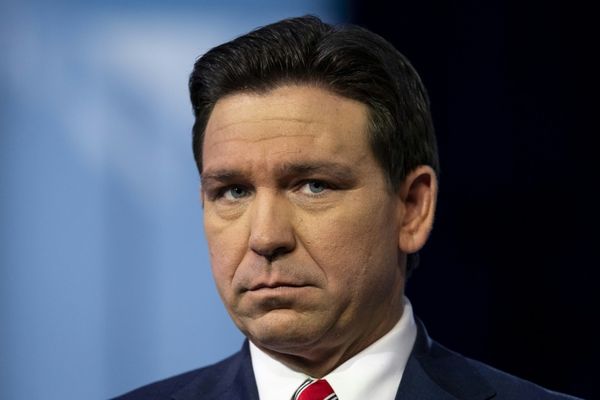
When the news first broke that Greta Gerwig would tackle a Barbie movie, excitement started to build long before anyone actually knew what that meant. Unlike superheroes or princesses or so much other exhumed IP, the glamorous doll doesn’t come prepackaged with narrative, leaving open the question of what she would do in a big-screen vehicle primarily greenlit off her brand recognition.
Gerwig’s thoughtful track record as a film-maker suggested that she wouldn’t take the gig unless she had something up her ruffled taffeta sleeve, leading many to theorize a meta element possibly sending Barbie into the real world, but nobody could have guessed the extent to which the director-co-writer has taken the concept and run with it. Even the trailers affirming that Barbie makes the interdimensional montage from her reality to ours with Ken in tow still conceal so much of the substance and atmosphere of a film with much more on its mind than the typical Hollywood product.
Now that Gerwig’s latest is out there painting multiplexes an eye-searing shade of pink, we can issue the strongest spoiler alert warning possible and pop Barbie’s head off to see what’s going on inside her cavernous neck hole. Read on for a discussion of the internal logic, the peppy pop politics, the cameos and everything else bundled with this shiny new cinematic playset:
It’s a Barbie world, with physics to match

Following a Kubrick-aping prologue that introduces Barbie in the place of 2001: A Space Odyssey’s monumental black obelisk, the film descends on Barbie Land, a soundstage fantasy of Dream Houses painted in hyper-saturated color. This realm is governed not by the laws of nature, but by the childlike illogic of playtime: Margot Robbie’s Stereotypical Barbie drinks from an empty cup, bounces off of plastic water and floats from her top-floor bedroom down to her car on the street as if carried by an invisible hand. The chipper, blunt dialogue sounds like the internal monologue of an eight-year-old’s imagination, declaring every day forever and ever to be the best day ever. When Ken (Ryan Gosling) hurts himself, Doctor Barbie heals him in the space of a single sentence. If Barbie and Ken were to kiss, one assumes they would do so by mashing their faces together at a diagonal.
Every aspect of the first act’s setting has been informed by the rituals and aesthetics of toys and their attendant media, harkening back to the brand-savvy of The Lego Movie. During an argument, Ken hurls Barbie’s wardrobe out through the missing fourth wall of her home, and each outfit momentarily flattens into a display-fold with logo and caption while suspended in the air. An upbeat song by Lizzo delivers exposition like a commercial jingle, narrating each of Barbie’s actions as she performs them. In this land of rictus smiles and relentless sunshine, imperfection is a cardinal sin; Barbie’s existential crisis kicks into gear as she notices a small patch of cellulite on her thigh, and that her naturally high-heeled feet now stand flat on the ground. Horror of horrors – she’s becoming a real woman.
The big, bad patriarchy

Her search for a cure directs her to the real world, where she’s shocked to find that our Earth bears little resemblance to the estrogen-fueled paradise she left behind. As in their feminist Eden, Barbie and Ken came expecting a female president, female garbage-haulers, female Nobel laureates and a coterie of adoring, pliable men just grateful to share their presence. She’s shattered to find that she isn’t the inspirational role model she imagined herself to be, but he’s delighted to discover a power structure that places him and his brethren on top, and carries this thrilling new ideology back to Barbie Land. Before you can say “Simone de Beauvoir”, he’s instituted a full-blown patriarchy with all the once-empowered Barbies brainwashed into submissive, beer-serving pleasure slaves. With a little help from walking #NotAllMen counterpoint Allan (Michael Cera), Barbie must open her sisters’ eyes to the reality that there’s more middle ground to womanhood than being an accessory to a man or a flawless exemplar of femininity.
The reactionary weirdoes decrying Barbie as peddling the “woke” agenda haven’t pulled much of a gotcha, accurately summarizing the textual substance of a film about one woman’s sudden burst of institutional consciousness. Like a college freshman taking an intro class on gender – or perhaps like a high-schooler seeing a mass-market blockbuster with a developed political streak for the first time – Barbie becomes abruptly aware of the untenable societal pressures heaped upon womankind, released in a cathartic monologue by normal-person surrogate America Ferrera. She resolves the many contradictions of the male gaze by slicing through the Gordian knot, simply concluding that whatever women want is fine, so long as everyone lets them live their lives in peace. It’s a pretty anodyne statement, though it accompanies an ending that effectively reduces men to pets. The steadfast refusal to coddle male ego may be the most unabashedly subversive notion in a project often conflicted about its opposing mandates as a critical work of art and a commercial good for sale.
Stickin’ it (kind of) to the suits

Gerwig gets out in front of her decision to take a check from Mattel by centering her new corporate overlords in the film. Barbie and Ken’s shenanigans in the real world draw the attention of the Mattel C-suite, portrayed as a conference table’s worth of largely interchangeable men led by a CEO who requests to be called “Mother” (Will Ferrell) and his CFO flunky (Jamie Demetriou). Being authority figures, they naturally assume the antagonist role as they race to get their star product back in her box, a literal display case binding her wrists and ankles positioned as metaphor for an attitude of silent compliance. Gerwig’s revisionist outlook seeks to liberate the plastic and fantastic icon, allowing her a less orderly humanity in more than just a biological sense. Warhol’s axiom about art being whatever you can get away with comes to mind in surprisingly off-brand moments such as the instant-classic punch line that ties a ribbon on the film.
And yet for all the valid critique lodged by Gerwig – that this company marketing itself to little girls has entirely male management, that they profited for many years off of unattainable body standards, that they have hastily discontinued dolls like the pregnant Midge and the ambiguous Earring Magic Ken and anything else complicating their clean, hegemonic worldview – the film can’t help its promotional origins in brand synergy. Ferrera’s character pitches the CEO on a normal-person Barbie, a character unencumbered by the expectations to be an immaculately manicured beauty nor a successful career woman. Ferrell laughs this off as a non-starter until his CFO looks up from a calculator and suggests it would actually make them money, at which point the doll is put into immediate production. Gerwig’s having a laugh at her own expense, conceding that all her subversions will be happily permitted so long as they agree with the profit margins.
Everyone’s invited to the party

The first trailer revealed that Robbie-Barbie lives as one of many such Barbies populating Barbie Land, their rank a rainbow of demographic representation including Issa Rae, Hari Nef, Sharon Rooney and Ana Cruz Kayne. (Featured soundtrack artist Dua Lipa even pops by as a trio of mermaid sisters to wobble her way through a few lines of dialogue, most of which are “Hi, Barbie!” John Cena dons a wig of flowing blonde tresses as her Kenmaid counterpart.) Likewise, Gosling’s Ken rolls with an entourage of backup Kens, though in keeping with the film’s ladies-first doctrine, the second-stringer likes of Kingsley Ben-Adir and Ncuti Gatwa get slightly less to do than the ensemble Barbies. Odd man-boy out among the fellas is Cera’s Allan, the less-macho Ken alternative initially marketed as a “friend” and shown here to enjoy giving the guys foot massages. Perhaps he’d get along with the briefly glimpsed Sugar Daddy Ken, played by a sporting Rob Brydon.
Other casting choices hint at Gerwig’s personal tastes seeping into the fabric of her film-making; the narration courtesy of Helen Mirren suggests a connected cinematic universe linking Barbie and the cult comedy series Documentary Now!. Barbie creator and Mattel co-founder Ruth Handler appears with a deified glow about her in the form of Rhea Perlman, the actor’s presence a possible nod to her past gig on Cheers as sharp-tongued barmaid Carla Tortelli, the kind of flinty, funny, unapologetic woman that speaks to Gerwig. In one of the film’s most unexpectedly poignant moments, Barbie shares a brief chat with an anonymous woman on a sidewalk bench, informing her that she’s beautiful only for her to respond: “I know.” That woman is Ann Roth, legendary costume designer and frequent collaborator of Gerwig’s husband and co-writer Noah Baumbach, her celebrated body of work across more than 50 years in the industry undoubtedly a point of admiration for the director. She’s living proof that no dividing line separates fashion from high art, one of the guiding principles for the film’s sartorial euphoria.
The library of influences

It’s not hard to imagine the dead-souled version of Barbie that alienates its built-in fanbase with lowest-common-denominator laziness and creative indifference, more advertisement than entertainment. Gerwig has endeared herself to moviegoers in part for the care she’s put into the making of her grand entrée to the budgetary big leagues, much of it informed by her encyclopedia passion for cinema at large. She’s spoken in interviews about the many Technicolor marvels of the past that contributed to the vivid palette of Barbie’s blissfully non-real homeworld, everything from Golden Age musicals like The Wizard of Oz and Singin’ in the Rain to transatlantic imports like The Red Shoes and The Umbrellas of Cherbourg. Her penchant for macro-scaled sight gags can be traced back to the oeuvres of Jacques Tati and Charlie Chaplin before him, masters of physical comedy relevant to actors mimicking the body language of posable playthings.
Other reference points work on the conceptual level; Barbie’s revelatory sight through her artificial status quo nods to The Matrix, The Truman Show, and the rest of the entries from the Onscreen Existentialism for Dummies canon. Every piece of the film speaks to some facet of Gerwig’s cinephilia, a magpie collage of favorites befitting the doodling and locker-adorning of adolescent girls. A disco number nicks fashions from Saturday Night Fever, while the kooky absurdist humor has roots in Pee-Wee’s Big Adventure. Eclectic as these picks may be, they’re all organized under a single, fully formed sensibility. Mattel may have stamped their logo all over the film, but audiences have taken note and flocked in droves because in the auteurist sense, Gerwig has made it her own as well.







